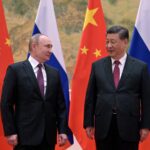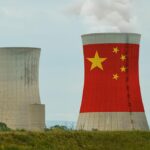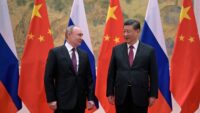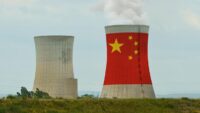Tech moves fast—stay faster.
Tech moves fast—stay faster.
China’s Defense Industry Is Experiencing a “DeepSeek Moment” in Breakthrough and Independence


By Farhan Ali • June 23, 2025
China is no stranger to long-term strategic build-ups—but recent breakthroughs in its defense sector are drawing new comparisons to what AI insiders have dubbed a “DeepSeek moment.” The term, borrowed from the disruptive rise of China’s AI-powered LLM competitor DeepSeek, now describes how China’s military-industrial complex is achieving self-reliance, system integration, and technical velocity at a pace that could reshape global defense balance.
What’s Happening
According to defense analysts at CSIS and Jane’s Defence, China has rapidly:
- Developed fifth- and sixth-generation stealth jet fighter prototypes
- Expanded hypersonic missile capabilities with mid-course correction AI
- Launched modular AI-guided naval combat drones
- Scaled domestic defense semiconductor production to reduce reliance on U.S. and European suppliers
- Integrated real-time targeting systems with machine learning algorithms for adaptive warfare
Why It’s a “DeepSeek Moment”
- Like DeepSeek, China’s military tech is increasingly developed in-house, using local talent and innovation loops.
- The speed of innovation is reducing dependence on slower procurement cycles or espionage-based R&D.
- AI and autonomy are being integrated as default, not add-ons, into all future systems.
One researcher noted: “We’re no longer talking about reverse-engineered jets or foreign-sourced avionics. This is a fundamentally new R&D rhythm for China’s defense pipeline.”

Strategic Implications
- Regional Security: South Korea, India, and ASEAN nations may accelerate defense investments to keep pace.
- US-China Relations: Adds pressure to U.S. efforts to limit semiconductor and AI exports.
- Military Doctrines: Changes how conflicts could unfold—fewer humans, faster machines, and algorithmic escalation risk.
Ecosystem-Level Growth
This is not just about advanced jets or drones. It’s about the infrastructure supporting them:
- Defense startups focused on machine vision, battlefield simulation, and predictive logistics
- Universities backed by PLA-affiliated grants to fast-track AI weapon design
- Defense software stacks modeled after commercial DevOps pipelines, enabling rapid iteration and testing
Risks
- Escalation Loops: Faster, autonomous systems heighten the risk of unintended conflict
- Arms Race Acceleration: Southeast Asian militaries may prioritize parity over diplomacy
- Global Governance Lag: Current treaties and regulatory norms are unprepared for AI-driven warfare at this scale

Conclusion
Whether on the battlefield or in cyberspace, the future of conflict is being shaped in real time—and China is moving fast. Its defense sector’s evolution is not just about projection of force, but projection of foresight. And for the rest of the world, that raises a new kind of strategic urgency.
Additional References:
- South China Morning Post (@scmpnews)
- Center for Strategic and International Studies (@csis_org)
- SIPRI Yearbook Defense Report (@sipri_yearbook)
- Jane’s Defence Intelligence (@janesintelligence)
- PLA Technology Research Reports (via @seasia.news)
Explore more
China’s New ‘ASEAN Visa’ Aims to Deepen Regional Connectivity and Boost Economic Recovery
By Farhan Ali • June 23, 2025 In a move signaling China’s...
FIFA Selects Jakarta as Regional Headquarters for Southeast and East Asia—Here’s What That Means for Football in the Region
By Evolution Staff • June 23, 2025 Jakarta has taken a giant...
Scoot Named World’s Best Long-Haul Low-Cost Airline by Skytrax—Here’s Why It Matters
By Evolution Staff • June 23, 2025 Scoot, the low-cost subsidiary of...
Borobudur Reawakens: Inside Indonesia’s Vision to Make the Temple a Global Spiritual Sanctuary
By Evolution Staff • June 23, 2025 Towering above the lush jungles...














Leave a comment